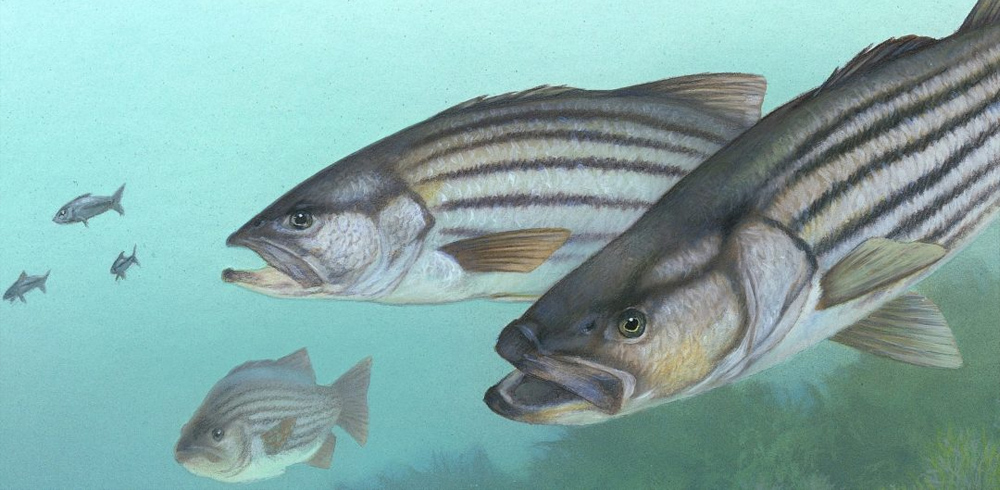To the keen eyed Virginian, the beginning of November is marked by several phenological events. To the motorist, the changing leaves are a summons to the high forests and winding roads of Shenandoah. To the city dweller, the transition might be unnoticed save for the nuisance of a morning frost on the windshield. To the Chesapeake Bay and its fishermen, the change in the calendar marks the return of the rockfish, completing another iteration of their age-old, though recently jeopardized, migration to the Chesapeake.
The rockfish’s landward migration from the salty shoals of New England to the brackish waters of the Bay is met by an opposite seaward migration, as anglers from the Blue Ridge and beyond flock eastward to the shore for the chance to bag the Chespeake Bay’s best sport fish. For a day of rockfishing, many anglers rise before the sun on their trek to the Bay. They uncleat their johnboats and drift off into the morning mist, as the sun crests the horizon and begins burning away the damp, predawn fog of the Chesapeake.
Morone Saxatilis is a creature of many names: rockfish, striped bass, stripers, sea bass, or linesiders, to name a few. For many Virginians, fishing for stripers is a staple of the spring and fall, but it’s easy to forget that this almost wasn’t so. In the 1970’s and 80’s, the Chesapeake Bay was in critical condition. Rockfish populations steeply declined, prompting the passage of the Emergency Striped Bass Act of 1979 and state-imposed moratorium on fishing. In 1982, biologists even considered placing the rockfish on the Endangered Species List.
To determine the causes of the population decline, scientific scrutiny of the rockfish intensified. The US Fish and Wildlife Service established a central database documenting coast-wide population estimates, stocking information, and migratory data. Scientific understanding of the rockfish deepened. Never before was the Chesapeake Bay – birthplace of up to 90% of Atlantic striped bass – known to play such an important role in the life cycle, survival, and success of the species.
The recovery of the Chesapeake Bay, aided by decades of federal and state-level legislation, has been long, slow, and incremental. Today, thanks to years of hard work, the Chesapeake Bay is able to support large scale recreational and commercial fishing, from competitive fishing tournaments to a multibillion dollar commercial industry. Stripers are anadromous fish, they are born in fresh water, live their lives at sea and come back to fresh waters to spawn. You can find them migrating upstream as far as the James River’s Fall Line and bringing economic benefits with them. In the spring, anglers routinely catch large, spawning stripers all the way up to Richmond.
Though the State of the Bay and the State of the James has improved, the fragility of these ecosystems came to be appreciated the hard way. The Chesapeake Bay has largely been pulled away from the environmental degradation of the 1970’s, but stripers still face challenges from bacteria, population reductions in prey species, and global warming. Continued progress depends on a combination of legislative action, and actions at home.
So this fall, as you uncleat your johnboat and motor off into the morning mist to catch a 10 million year old species on a 10,000 year old estuary, remember the harm that can be wrought by environmental neglect, and remember that we all play a role in protecting the health of the James, the Bay, and the inhabitants of both.

